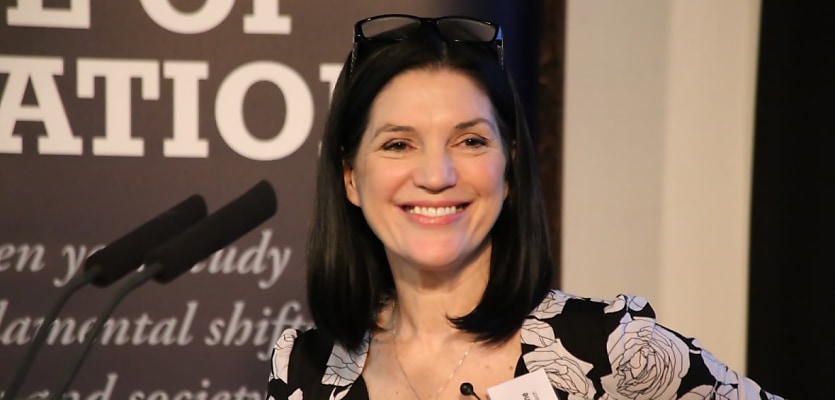New Roy Morgan research has shown that 30.3 per cent of mortgage holders are now “at risk” of mortgage stress.
According to the data, a record high 1,573,000 mortgage holders were “at risk” of mortgage stress in the three months to September 2023, up 7,000 from a month ago.
This period encompassed three meetings held by the Reserve Bank of Australia (RBA), in which interest rates were left unchanged.
However, the proportion of mortgage holders considered at risk (30.3 per cent) remains below the record highs reached during the global financial crisis because of the larger size of the current Australian mortgage market.
Indeed, 35.6 per cent of mortgage holders were considered at risk in mid-2008.
Strikingly, more than a fifth of all mortgage holders are now considered “extremely at risk” of mortgage stress (1,043,000), which is significantly above the long-term average over the last 15 years of 15.3 per cent.
Roy Morgan considers mortgage holders to be at risk if their mortgage repayments are greater than a certain percentage of household income – depending on income and spending.
Mortgage holders are considered extremely at risk if even the “interest only” is over a certain proportion of household income.
Notably, since the RBA began its interest rate rise cycle in May 2022, the number of mortgage holders considered at risk of mortgage stress has increased by 766,000.
The official cash rate is now at 4.1 per cent in October 2023, the highest since May 2012 over a decade ago.
Uptick in inflation
While the RBA has decided to leave the rate unchanged in its last four meetings on the back of lower inflation figures, inflation has “reaccelerated” and moved upwards, Roy Morgan CEO Michele Levine noted.
The latest consumer price index (CPI) numbers from the Australian Bureau of Statistics (ABS) for the year to September 2023 showed that inflation increased by 0.4 percentage points from August to 5.6 per cent (up 0.7 percentage points over the last two months).
“This is the first time official inflation has increased for two straight months so far this year – the last time was at the cyclical peak in December 2022 at 8.4 per cent,” Ms Levine said.
“The increases to inflation are not surprising though, considering the increase in energy and fuel prices in recent months.
“The average retail petrol price has averaged above $1.90 per litre for a record 12 straight weeks since early August – beating a previous record run at such a high price in May–July 2022. During mid-2022 inflation expectations increased rapidly from 5.3 per cent to 5.9 per cent – up 0.6 percentage points.”
Ms Levine continued: “The latest weekly inflation expectations data for mid-October shows the measure at 5.2 per cent for the week to October 29 – up 0.3 percentage points since mid-September and averaging 5.3 per cent over the last four weeks.
“The increases to petrol prices are being driven by a decline in the value of the Australian dollar which dropped below US63¢ in mid-October to its lowest since November 2022. As long as the Australian dollar stays low, and petrol prices stay high and even increase further, there will be additional inflationary pressures in the economy.”
Impact of more potential rate rises
With inflation on the rise, there is an expectation that the RBA could increase rates again in November to curb inflation.
Roy Morgan has modelled the impact of two potential RBA interest rate increases of 25 basis points in both November (to 4.35 per cent) and December (to 4.6 per cent).
The modelling showed that the proportion of mortgage holders considered at risk by November 2023, should the RBA hike rates, would increase from 30.3 per cent to 30.4 per cent (equalling 1,581,000 mortgage holders).
An additional rate rise in December would mean 31 per cent of mortgage holders would be considered at risk (1,612,000 mortgage holders).
However, Ms Levine flagged that this is a conservative model, with an assumption that all other factors remain the same.
The latest unemployment estimates for September show that almost one in five (18.9 per cent or almost 2.9 million) Australian workers are either unemployed or underemployed, up 0.3 per cent on a year ago.
Employment levels a key indicator of mortgage stress
Ms Levine said that while everyone is keenly eyeing interest rates, the greatest impact on an individual or household’s ability to pay their mortgage is their employment status (and if they lose their job or main source of income).
“When considering the data on mortgage stress, it is always important to appreciate that interest rates are only one of the variables that determines whether a mortgage holder is considered at risk,” she said.
“The variable that has the largest impact on whether a borrower falls into the at-risk category is related to household income – which is directly related to employment.
“The latest figures on mortgage stress show that rising interest rates are causing a large increase in the number of mortgage holders considered ‘at risk’ and further increases will spike these numbers even further. If there is a sharp rise in unemployment, mortgage stress is set to increase even more.”
If you’re looking to refinance for a better rate or are looking for the right rate for your clients at zero cost, contact Finni Mortgages’ experts and let us do the hard work for you.
Visit our website here or call 1300 002 023 to learn how we can help you!










You are not authorised to post comments.
Comments will undergo moderation before they get published.